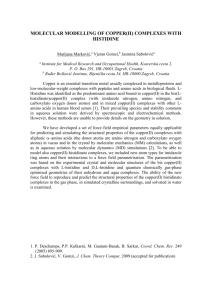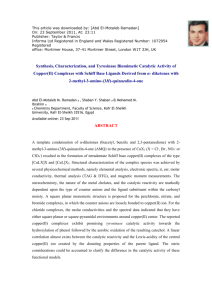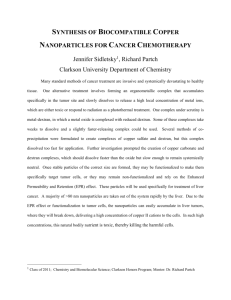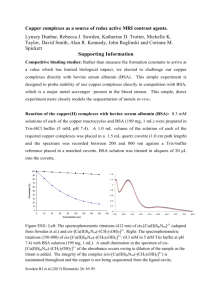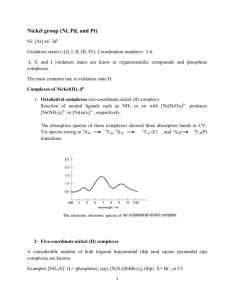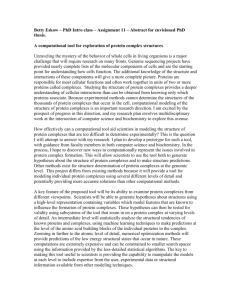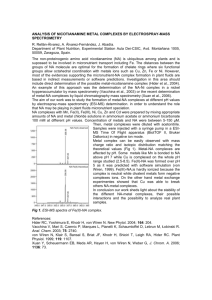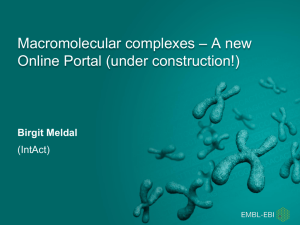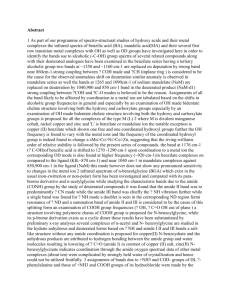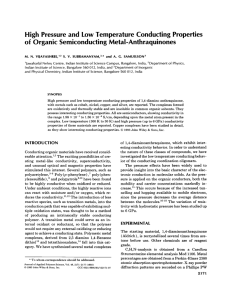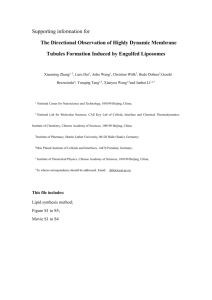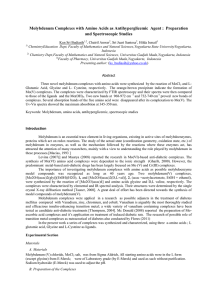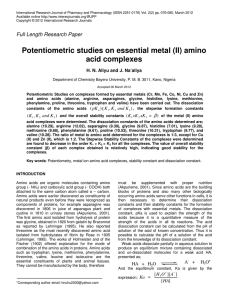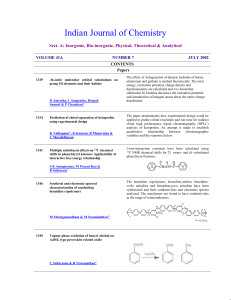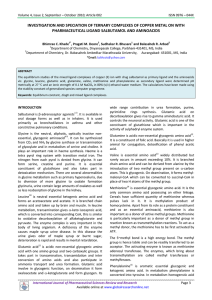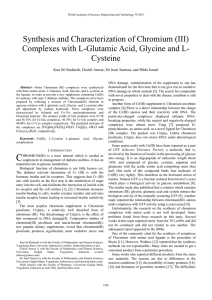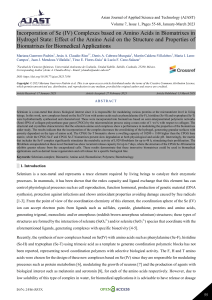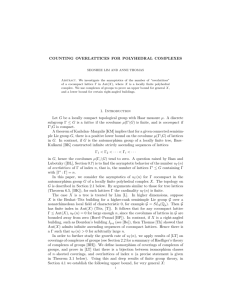OE1 - Universidad Nacional de La Plata
advertisement
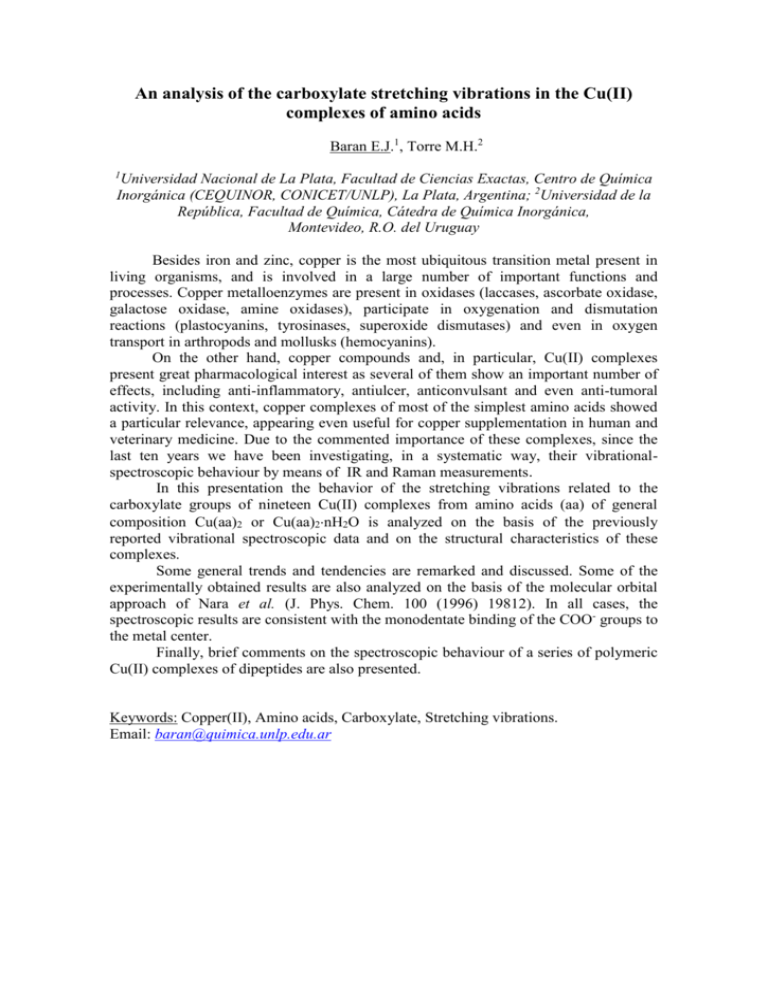
An analysis of the carboxylate stretching vibrations in the Cu(II) complexes of amino acids Baran E.J.1, Torre M.H.2 1 Universidad Nacional de La Plata, Facultad de Ciencias Exactas, Centro de Química Inorgánica (CEQUINOR, CONICET/UNLP), La Plata, Argentina; 2Universidad de la República, Facultad de Química, Cátedra de Química Inorgánica, Montevideo, R.O. del Uruguay Besides iron and zinc, copper is the most ubiquitous transition metal present in living organisms, and is involved in a large number of important functions and processes. Copper metalloenzymes are present in oxidases (laccases, ascorbate oxidase, galactose oxidase, amine oxidases), participate in oxygenation and dismutation reactions (plastocyanins, tyrosinases, superoxide dismutases) and even in oxygen transport in arthropods and mollusks (hemocyanins). On the other hand, copper compounds and, in particular, Cu(II) complexes present great pharmacological interest as several of them show an important number of effects, including anti-inflammatory, antiulcer, anticonvulsant and even anti-tumoral activity. In this context, copper complexes of most of the simplest amino acids showed a particular relevance, appearing even useful for copper supplementation in human and veterinary medicine. Due to the commented importance of these complexes, since the last ten years we have been investigating, in a systematic way, their vibrationalspectroscopic behaviour by means of IR and Raman measurements. In this presentation the behavior of the stretching vibrations related to the carboxylate groups of nineteen Cu(II) complexes from amino acids (aa) of general composition Cu(aa)2 or Cu(aa)2nH2O is analyzed on the basis of the previously reported vibrational spectroscopic data and on the structural characteristics of these complexes. Some general trends and tendencies are remarked and discussed. Some of the experimentally obtained results are also analyzed on the basis of the molecular orbital approach of Nara et al. (J. Phys. Chem. 100 (1996) 19812). In all cases, the spectroscopic results are consistent with the monodentate binding of the COO- groups to the metal center. Finally, brief comments on the spectroscopic behaviour of a series of polymeric Cu(II) complexes of dipeptides are also presented. Keywords: Copper(II), Amino acids, Carboxylate, Stretching vibrations. Email: baran@quimica.unlp.edu.ar
